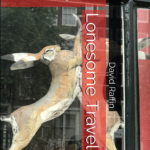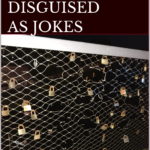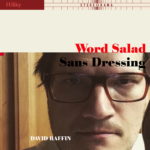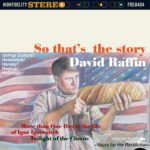by David Raffin
If a cartoonist draws Muhammad, he or she invariably will frame that drawing between four straight lines, a graphic representation of a box. Herein lies a problem: Nobody puts Muhammad in a box.
Muhammad in the Box was a toy popular in the fifties. You turned the crank and it played a tune. But Muhammad never popped out. Angry parents would take the toy to the manufacturer and complain. The manufacturer invariably told them that Muhammad does not “pop out.” Such would be unseemly.
Some asked if Muhammad was really in the box. Here the manufacturer had to be clever. He said that Muhammad was, in fact, simultaneously in the box and not in the box at the same time. Possibly with, or without, a cat. “Is he or isn’t he?” they would ask. And he would reply “It depends on whether you want him to be. Do you want him to be? Are you looking? What are your expectations? Would you know him if you saw him? Would you know him from Jack? Perhaps you and your questioning are really the issue here.”
In this way, while there was never a no-return policy, the lack of returns was assured.
Sometimes people would journey to the manufacturer and ask, “If Muhammad is in the box, what is he doing in there?” and associated questions like, “How did he come to be in the box, if that is where he is?” and “Is there possibly anyone else in there?” sometimes followed by “and how do they get along?” Occasionally a traveler looking for answers would become clever and ask, “Are we even talking about the same Muhammad? It is a very common name.”
The manufacturer would say, “No one knows” “It is matter for the scholars” “How is it any of your business?” “With the utmost hospitality, as is the custom” and “Look in your own heart.”
The fast food outlet Muhammad in the Box makes the best falafel, granted the locations are difficult to find. They neither advertise or have a logo. But their falafel is the best.
Falafel in Europe, an experience in hospitality
Falafel stands are fairly ubiquitous throughout the world. You can buy a falafel about as cheaply as a hashish brownie in Amsterdam. Once, when I was alone in the city, I stopped at a small falafel place. I was the only customer. Here I was witness to the famous Middle Eastern hospitality. Arabs are actually renowned for their hospitality. I can only say I was treated very well for a guy who walked into a place and only spent €4.50. It’s more expensive to eat at Burger King (they have them but that doesn’t mean you should eat there).
Culinary deception!
Have you ever gone to an Indian restaurant, eaten, then stood and shouted, “Are you telling me this is Pakistani food?” I have.
All I can say is — they take it graciously.
I understand the reticence of the Pakistani immigrants to name their resulting restaurants “Pakistani” and going instead with the more common “Indian.” I get it. No one knows what Pakistani food is. Rarely, if ever, do people outside of Pakistan declare “Honey, let’s eat Pakistani food tonight.” Come to think of it, they don’t say that in Pakistan either. I don’t think they commonly use the endearing nickname “honey.” I think most of them, being 70% Sunni Muslim, prefer the more common middle eastern term of endearment, “sohniye.” Wait. That’s just Punjabi for “beautiful girl.” There is a lot of interchange in endearment. But that is neither here nor there.
What it is — is culinary deception. When I go out for Indian food I don’t want Pakistani food foisted on me as Indian food; and I certainly don’t want Indian food foisted on me when I go searching for Pakistani food.
I tell you, that is as offensive as lacing mock apple pie with real apples.

















 RSS - Posts
RSS - Posts
